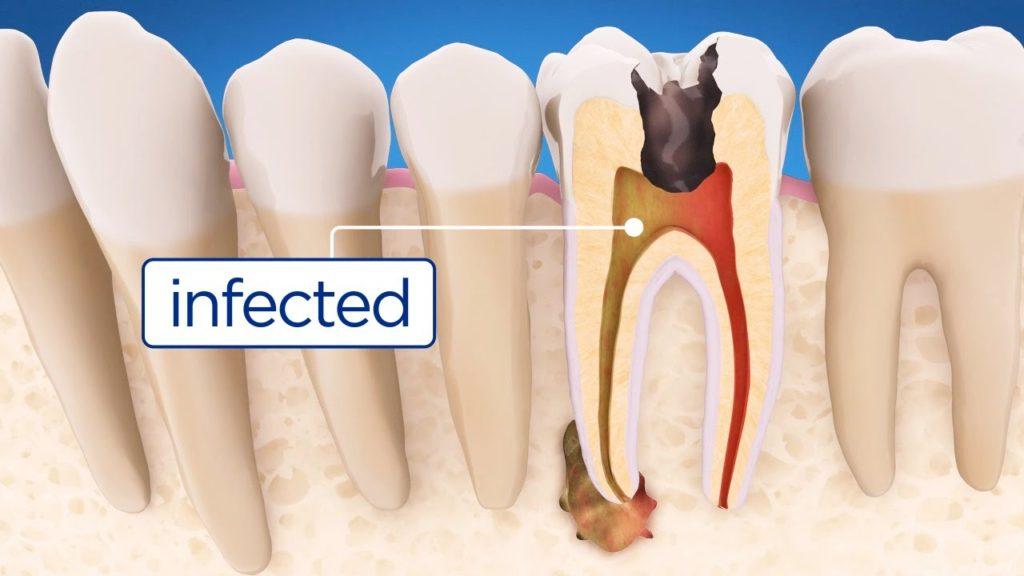Endodontic Treatment
The structure of the tooth consists of an external hard tooth substance and an internal space (pulp and canals). These canals contain nerve fibers and blood vessels. The opening of the pulp requires endodontic treatment – the root canal procedure.
Causes that can lead to the opening of the pulp are various. It is usually the result of the deep cavity that is not fixed in time. The caries bacteria then penetrate deeper into the tooth structure, reach the nerve and cause its inflammation. This is a very painful condition for a patient.

Another cause may be a tooth fracture when the fracture line is positioned so that the pulp is open. Based on the examination and analysis of the X-ray, a dentist will evaluate whether the fracture of the tooth can be healed with the root canal treatment or that tooth needs to be extracted.
The procedure itself consists of giving local anesthesia, opening the root canals, their disinfection, and definitive filling.
Most often, after this treatment, we will recommend making a porcelain crown on this tooth. It is good to place a crown because of the protection of that tooth, which after the removal of the nerve becomes more sensitive to impact.
Post-Operative Instructions
- After this treatment, you can feel the sensitivity of your teeth. It occurs most often from the pressure during eating. Also, the gums in the area where you received anesthesia can be sensitive for several days.
- The temporary filling in this tooth is not strong enough and stable. Keep in mind that you do not eat very hard and sticky foods and try to chew on the other side.
- Replace the temporary filling with the definitive one, with the method recommended by your dentist in the shortest possible time. Any delay in placing a definitive filling can lead to tooth damage.
- Keep oral hygiene regularly.
- If your dentist has prescribed some medicines (painkillers, antibiotics), take them regularly as you are advised, even if all symptoms that you have had are gone.
